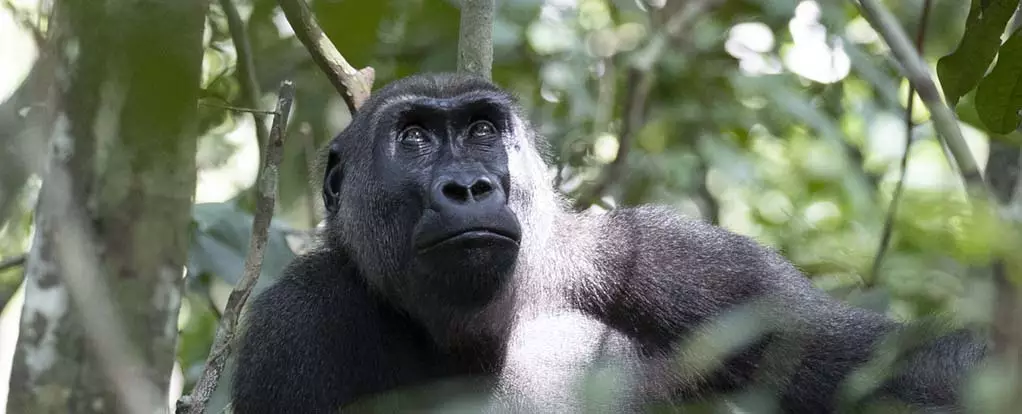Moukalaba-Doudou National Park, nestled in the heart of Gabon, paints a vivid picture of biodiversity that holds secrets not just for animals but for humans as well. The lush environment, teeming with flora, has been a source of sustenance and healing for both local communities and wildlife, particularly the western lowland gorillas. The relationship between these species and their ecosystem forms the crux of ongoing scientific investigations, driven by an understanding that nature often holds the answers for health and wellness.
Recent studies have shed light on the long-standing knowledge of local healers and herbalists regarding the medicinal properties of plants that are also part of the gorillas’ diet. This connection between gorillas and traditional medicine offers a fascinating lens through which to explore the untapped potential of Gabon’s flora. Bacteriologists Leresche Even Doneilly Oyaba Yinda and Richard Onanga, with their team from the Interdisciplinary Medical Research Center in Franceville, have embarked on an essential journey to validate these traditional practices through scientific inquiry.
The Significance of Local Knowledge
The reliance on nature for medicinal purposes is not unique to Gabon; it is a universal practice rooted deep in human history. However, the recent findings from Moukalaba-Doudou underscore the cultural significance of local plants, particularly those utilized by the western lowland gorilla. In a groundbreaking study conducted in 2022, community members detailed the various plants integrated into their traditional health practices. Such ethnobotanical knowledge is critical, as it reflects a rich tapestry of interaction with the natural world, wherein generations have learned to identify which flora are beneficial for specific ailments.
Leveraging this indigenous wisdom, the researchers turned their attention to the bark of four key trees: the kapok tree, giant yellow mulberry, a specific type of ficus, and African teak. Each of these species was subjected to rigorous analysis, focusing on their antimicrobial and antioxidant properties. The results were compelling; it was noted that all four demonstrated varying degrees of efficacy against multidrug-resistant strains of bacteria, particularly Escherichia coli, a common yet dangerous pathogen.
Extracts with Medicinal Promise
One of the standout findings revealed that the bark extract from the kapok tree showed remarkable potency against every strain of multidrug-resistant E. coli examined. Such results pose intriguing questions about the applicability of these natural resources in contemporary medicine, especially in an age where antibiotic resistance poses a significant challenge to public health.
The researchers also explored the antioxidant capacities of the different plant extracts. Both the ficus subspecies and African teak displayed the strongest antioxidant properties, suggesting potential roles in combating diseases related to oxidative stress. Interestingly, the extraction method employed—ethanol versus water—had a notable impact on the potency of these antioxidant activities, opening avenues for further exploration and refinement in how these plant compounds can be utilized.
While the findings are promising, the authors emphasize caution. The absence of clinical trials means that definitive claims about the effectiveness of these natural treatments cannot be made at this stage. Furthermore, it is crucial to discern whether gorillas consume these plants for their health-promoting qualities or merely as part of their diet. The dynamic interplay between nutrition and medicine in the animal kingdom raises fascinating questions and highlights the need for more in-depth studies.
The idea of zoopharmacognosy—the notion that animals, including gorillas, may naturally seek plants to self-medicate—adds another layer of intrigue to their ecological and biological significance. Researchers propose that the immunity-boosting properties these gorillas might gain from such diets could explain their resilience against certain diseases.
As this research unfolds, it becomes ever more apparent that the conservation of natural habitats like Moukalaba-Doudou National Park is not just about preserving biodiversity for its own sake, but safeguarding a rich repository of knowledge that could lead to new medical breakthroughs. The intricate web of life in these remaining ecosystems goes beyond a mere collection of species; it embodies years of evolutionary history, play a significant role in local health practices, and holds the potential to inform the future of medicine.
It is the intersection of traditional wisdom and scientific methodology that may unlock new pathways toward addressing contemporary health issues. The ongoing investigations not only aim to validate the historical uses of local plants but also to foster a deeper appreciation of our natural heritage—one that requires protection, curiosity, and respect for the intricate relationships that bind us to the environment and each other.

Leave a Reply